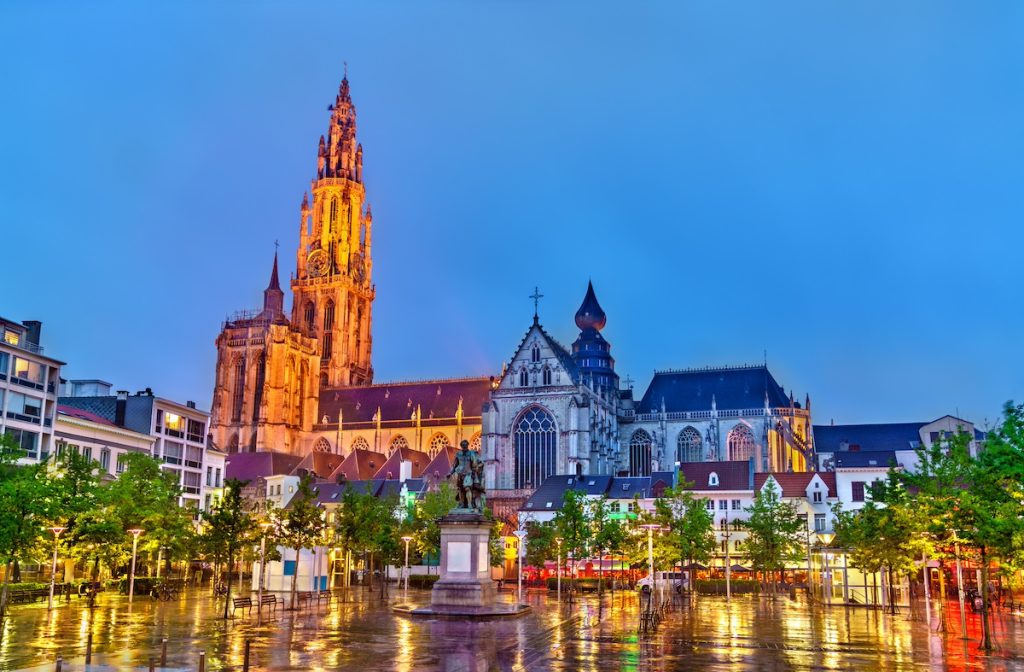Antwerp’s Cathedral of Our Lady, a masterpiece of Gothic architecture, stands as a testament to the rich history and cultural heritage of Belgium. As the tallest church in the Low Countries, its stunning spire dominates the skyline of Antwerp, drawing visitors from around the world. The history of this iconic cathedral is as fascinating as the building itself, marked by centuries of construction, artistic contributions, and religious significance. Walking through the medieval streets of Antwerp leading to the cathedral adds to the experience, as these historic pathways transport visitors back in time, offering a glimpse into the city’s rich past.
The Early Beginnings
Foundations and Construction
The origins of the Cathedral of Our Lady date back to 1352 when construction began on the site of an earlier Romanesque church. The ambitious project was intended to create a monumental place of worship, reflecting the wealth and growing influence of Antwerp during the medieval period. The cathedral was designed in the Gothic style, characterized by its pointed arches, ribbed vaults, and flying buttresses, all of which contribute to the building’s grandeur and sense of verticality.
Challenges and Delays
The construction of the cathedral was a monumental undertaking that spanned over two centuries, with work continuing until 1521. Various challenges, including financial difficulties, technical issues, and political upheaval, caused delays in the completion of the cathedral. Despite these setbacks, the builders remained committed to creating a structure of unparalleled beauty and scale.
Artistic Treasures Within the Cathedral
Masterpieces by Peter Paul Rubens
One of the most remarkable aspects of the Cathedral of Our Lady is its collection of artistic treasures. The cathedral houses several masterpieces by the renowned Flemish Baroque painter Peter Paul Rubens. Among these are “The Descent from the Cross,” “The Elevation of the Cross,” and “The Assumption of the Virgin Mary,” which adorn the altars and chapels of the cathedral. These works not only enhance the spiritual atmosphere of the cathedral but also attract art lovers and historians from around the world.
Sculptures and Stained Glass
In addition to Rubens’ paintings, the cathedral features an impressive array of sculptures and stained glass windows. The intricate carvings on the pulpit, choir stalls, and altarpieces showcase the skill and craftsmanship of medieval and Renaissance artists. The stained glass windows, which date back to various periods, depict biblical scenes and saints, casting colorful light throughout the interior of the cathedral.
The Cathedral’s Role in Religious and Civic Life
A Center of Catholic Worship
As the primary church of the Archdiocese of Mechelen-Brussels, the Cathedral of Our Lady has long been a center of Catholic worship and religious activity in Antwerp. Over the centuries, it has hosted countless masses, ceremonies, and religious festivals, playing a central role in the spiritual life of the city. The cathedral’s importance as a place of worship is underscored by its dedication to the Virgin Mary, a figure of profound significance in Catholic tradition.
A Symbol of Antwerp’s Identity
Beyond its religious function, the Cathedral of Our Lady has also served as a symbol of Antwerp’s identity and resilience. The cathedral has witnessed and withstood numerous historical events, including the Reformation, iconoclastic riots, and wars that threatened its very existence. Despite these challenges, the cathedral has remained a steadfast symbol of the city’s endurance and cultural heritage.
Restoration and Preservation
Preserving a Gothic Masterpiece
The centuries have taken their toll on the Cathedral of Our Lady, leading to various restoration efforts aimed at preserving its structural integrity and artistic treasures. Significant restoration work was undertaken in the 19th and 20th centuries to address damage caused by weather, pollution, and past conflicts. These efforts have been crucial in ensuring that the cathedral remains a vibrant and accessible monument for future generations.
Modern Challenges and Conservation
Today, the cathedral faces modern challenges related to conservation and maintenance. Ongoing efforts are required to protect the building from environmental factors, such as air pollution and climate change, which continue to pose risks to its delicate architecture and artworks. Preservationists and historians work diligently to balance the cathedral’s historical integrity with the needs of a contemporary city.
Conclusion
The Cathedral of Our Lady in Antwerp is more than just a place of worship; it is a living monument to the city’s history, culture, and artistic legacy. From its Gothic architecture and Rubens masterpieces to its role in religious and civic life, the cathedral stands as a testament to the enduring spirit of Antwerp. As restoration efforts continue, this iconic structure will remain a beacon of faith and heritage for generations to come.

